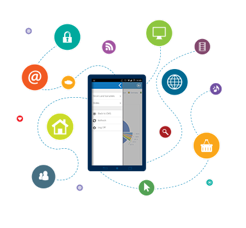

In most cases, governed data access refers to information accessed within a managed database or set of data sources. This means that governed data access refers to data accessed within specific sources that are part of the solution provider’s offering, but that data accessed externally falls outside the parameters of data governance. Some of the challenges of this for organizations are as follows:
- providing flexible data access to broader users while controlling data validity
- ensuring users understand the differences between types of data being accessed
- limiting access to governed sources
- developing an iterative framework to manage data quality
- providing access points and processes surrounding non-governed data sources
- letting different types of users interact with all the data they require
All of these challenges also provide organizations the opportunity to identify the best way to govern their data. Without governed data access points, it becomes hard for users to trust their analytics. Without trust in data it becomes almost impossible to identify whether metrics are accurate. And in many cases, people know that they can’t trust the data they are accessing so don’t want to use their BI tools. This exists whether the tool is Excel or some advanced BI tool, unless data governance exists.
Because more organizations are starting to quantify the benefits of their data assets, the value proposition of data governance has increased. Therefore, the bundled solutions that include governed data can help organizations achieve quicker implementation times with valid data. The only issue to consider is whether there will be data sources needed for regular analytics that will continue to reside external to the governed sources. Overall, organizations need to understand this to ensure they can evaluate solutions with an understanding of how data will be managed over time.